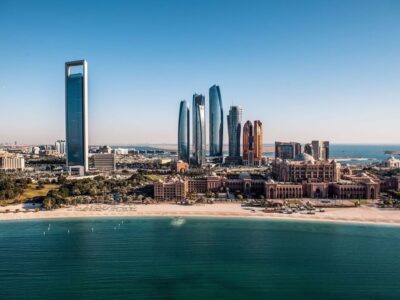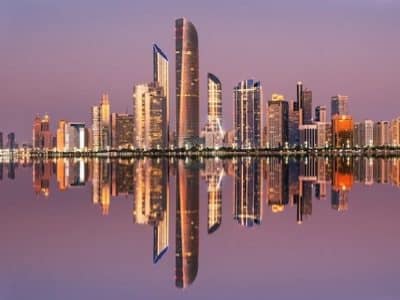Saudi Arabia’s ambitious Vision 2030 goals have been given a huge boost by the rollout of the kingdom’s National Investment Strategy (NIS).
The NIS is a catalyst to deliver the kingdom’s economic transformation plan which was first outlined by Prince Mohammed bin Salman bin Abdulaziz, Saudi Crown Prince, Deputy Prime Minister and chairman of the Council for Economic and Development Affairs five years ago.
The strategy will contribute to the growth and diversification of the economy, including raising the private sector’s contribution to GDP to 65 percent; increasing the contribution of FDI to GDP to 5.7 percent; and increasing the contribution of non-oil exports to GDP from 16 percent to 50 percent.
Scott Cairns, founder and managing director of Creation Business Consultants, told Arabian Business: “To those on the outside looking in, the goal of increasing FDI to 5.7 percent of gross domestic product (GDP) by 2030 may appear naively optimistic. However, if you look at this goal in the context of some of the other reforms, changes and strategies that are being implemented, this Vision 2030 plan starts to look possible.”
In launching the strategy, the Crown Prince said more than SR12 trillion will be injected into the national economy through investment activity by 2030 – the Shareek program initiatives, announced earlier this year, will inject SR5trn, the Public Investment Fund is set to contribute SR3trn, and the remaining SR4trn will be generated by investments facilitated by the NIS.
The economy will also receive SR10trn through government spending during the next 10 years and a further SR5trn from private consumption spending in the same period.
 Scott Cairns, founder and managing director of Creation Business Consultants.
Scott Cairns, founder and managing director of Creation Business Consultants.
Cairns said: “Towards the end of the first decade of this century, inward investment to the kingdom averaged around $8 billion to $10bn-a-quarter. During 2011 it dropped dramatically averaging $4bn-a-quarter and declined steadily over the years, before bottoming-out at $1.4bn for 2017.
“However, on a brighter note, Saudi reported its highest rate of inward investment for four years was achieved during the second quarter of 2021, with figures reaching a staggering $13.8bn. The Central Bank of Saudi Arabia announced this is the kingdom’s highest FDI inflow since the start of 2006.”
In the fourth quarter of 2020, the private sector accounted for 50.5 percent of GDP, according to Saudi Arabia’s General Authority for Statistics. Foreign direct investment made up 0.6 percent of GDP in 2019, roughly $4.5 billion, according to World Bank data.
“Raising the contribution of the private sector to 65 percent is an important goal, but this simple indicator should be complemented by deeper ones. In particular, the private sector must not only grow in absolute contribution, it must be decoupled from government economic activity so that it can truly drive economic growth,” Omar Al-Ubaydli, director of research at Derasat, told Arabian Business.
Paul Arnold, managing director of Sovereign Saudi Arabia, said the company has already witnessed a 35 percent increase each quarter in the number of business incorporating and mobilising their personnel in Saudi Arabia.
He said: “Clients are demanding accurate and sector specific advice in addition to seeking project tender and bid opportunities. Response times from government in facilitating market-entry are improving and the re-opening of international borders have proven a catalyst for FDI.
“The kingdom has come a long way in the last several years and announcements such as the NIS unquestionably strengthen the attractiveness and opportunities in Saudi Arabia.”
 Paul Arnold, managing director of Sovereign Saudi Arabia.
Paul Arnold, managing director of Sovereign Saudi Arabia.
Saudi Arabia’s recent transformation includes the launch of multi-billion dollar giga-projects such as Diriyah, Qiddiya, the Red Sea Development and the new city Neom; to sweeping reforms including the creation of economic zones to offer foreign investors the chance to incorporate companies with favourable taxation, duties and ownership structures; and the much publicised ruling that multinational companies must have their headquarters in Saudi Arabia by 2024 or risk missing out on lucrative government contracts.
Cairns said: “With the aforementioned in mind, it is not that difficult to see that whilst the goals are ambitious, the kingdom is making massive strides towards ensuring they will be achieved.”
However, Robert Mogielnicki, resident scholar at the Arab Gulf States Institute in Washington DC, cautioned: “It will ultimately be up to investors to decide if they want to buy what the Saudis are selling. Strategies and announcements of this nature emphasise the available supply of potential investment opportunities and the associated incentives, but that’s only one side of the economic coin.”
Traditionally, Saudi Arabia has been one of the less friendly GCC markets to tap into, but efforts are underway to cut red tape and reduce bureaucratic proceedings. The kingdom’s ease of doing business rating was 62 out of 190 in 2019 after jumping 30 spots, according to the World Bank.
Even then, there is work that can be done to further increase attractiveness.
“To increase foreign direct investment they’ll have to increase transparency reform the labour market and essentially try to structure their economy to look a lot more like the UAEs,” Strafor Middle East analyst Ryan Bohl told Arabian Business.
A further key element of the strategy is to reduce the unemployment rate in the kingdom to 7 percent. Earlier this month, Jadwa Investment revealed a decline in unemployment so far this year – down to 11.3 percent in Q2, the lowest since 2011 – which it said reflects the broader recovery seen in the Saudi economy as a whole from the coronavirus pandemic.

Stuart D’Souza, co-founder and director of Arabian Enterprise Incubators (AEI), told Arabian Business: “The private sector contribution to GDP is obviously a clear indicator of the success of the diversification programme, moving from old Saudi to new Saudi.
“An increase in FDI will prove that the new opportunities and regulatory reform have opened the kingdom up as a destination for global investors. And increasing non-oil exports will show that the kingdom’s industrial and commercial output can compete in the global economy.
“But we see reducing unemployment as fundamentally improving the lives, life-chances and future for Saudi national citizens, and that is what Vision 2030 is all about.”





